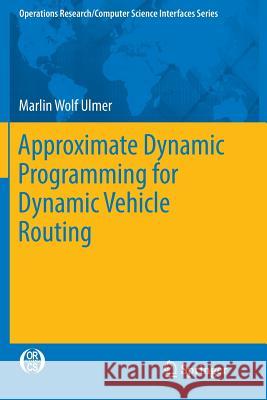Approximate Dynamic Programming for Dynamic Vehicle Routing » książka
topmenu
Approximate Dynamic Programming for Dynamic Vehicle Routing
ISBN-13: 9783319856810 / Angielski / Miękka / 2018 / 197 str.
Kategorie:
Kategorie BISAC:
Wydawca:
Springer
Seria wydawnicza:
Język:
Angielski
ISBN-13:
9783319856810
Rok wydania:
2018
Wydanie:
Softcover Repri
Ilość stron:
197
Waga:
0.32 kg
Wymiary:
22.89 x 16.33 x 1.19
Oprawa:
Miękka
Wolumenów:
01
Dodatkowe informacje:
Wydanie ilustrowane











